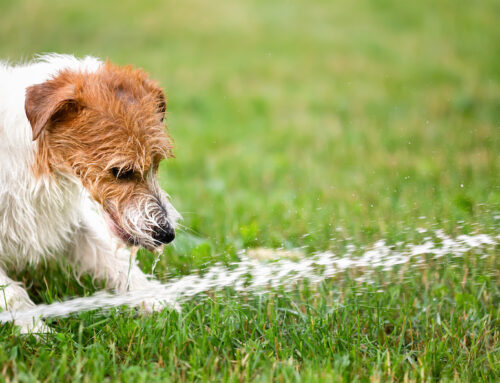At the heart of every responsible pet owner lies a commitment to the well-being of their furry companions. One crucial decision in the journey of pet ownership is spaying or neutering. While this topic may evoke various emotions, it’s essential to understand the profound benefits these procedures offer not only to individual pets but also to the broader animal community.
Here, at the Animal Care Center, we believe in promoting the health and happiness of pets through education and responsible pet care practices.
In this article, we’ll dive into the myriad advantages of spaying and neutering, empowering pet owners to make informed decisions for their beloved animal companions.
What Does it Mean to Spay and Neuter Pets?
Spaying and neutering are surgical procedures performed by veterinarians to sterilize pets, preventing them from reproducing. Here’s a breakdown of each procedure:
Spaying (for females):
- Spaying, also known as ovariohysterectomy, involves the removal of a female animal’s reproductive organs, including the ovaries, fallopian tubes, and uterus.
- This procedure eliminates the female’s ability to conceive and reproduce offspring.
- It is typically performed when the animal is young, often before their first heat cycle, although it can be done at any age.
Neutering (for males):
- Neutering, also referred to as castration, entails the surgical removal of a male animal’s testicles.
- By removing the testes, neutering eliminates the male’s ability to impregnate females and father litters.
- Similar to spaying, neutering is often performed when the male is young, but it can also be done at any age.
Both spaying and neutering are routine surgical procedures conducted under general anesthesia by trained veterinarians. They are safe and commonly performed in veterinary clinics and animal hospitals. These procedures are highly effective in preventing unplanned pregnancies and contribute to controlling pet overpopulation, reducing the number of homeless animals and the strain on animal shelters and rescues.
In addition to preventing reproduction, spaying and neutering offer various health and behavioral benefits for pets. These procedures are considered essential components of responsible pet ownership and are recommended by veterinarians as part of comprehensive pet care.

What Age is Best for Spaying and Neutering Pets?
The optimal age for spaying and neutering pets can vary depending on factors such as species, breed, size, and individual health considerations. However, general guidelines provided by veterinary associations and professionals typically recommend spaying and neutering pets at a relatively young age, often before they reach sexual maturity. Here are some general recommendations for the timing of spaying and neutering:
Dogs
- Small to medium-sized breeds: Spaying or neutering is often recommended between 6 to 9 months of age. Some smaller breeds may reach sexual maturity earlier, so timing may vary.
- Large and giant breeds: For larger breeds, veterinarians may recommend waiting until the dog is closer to 1 year of age or even older before spaying or neutering. This is because larger breeds may have a longer growth period, and delaying the procedure can allow for more appropriate skeletal development.
Some veterinarians also advocate for early spaying and neutering, which involves performing the procedure as early as 8 weeks of age. Early spaying and neutering are typically safe and may offer certain advantages, such as reducing the risk of unwanted litters and certain health issues.
Cats
- Spaying or neutering cats is often recommended between 4 to 6 months of age. Many veterinarians prefer to perform the procedure before cats reach sexual maturity to prevent unwanted pregnancies.
- Some animal shelters and rescue organizations may spay or neuter cats at an even earlier age, often as young as 8 to 12 weeks, before adoption.
It’s essential to discuss the timing of spaying or neutering with your veterinarian, who can provide personalized recommendations based on factors such as the individual pet’s health, breed, and lifestyle. While early spaying and neutering are generally safe and effective, it’s crucial to ensure that the pet is in good health and that the procedure is performed by a qualified veterinarian in a safe environment.
Delaying spaying or neutering beyond sexual maturity may increase the risk of certain health issues, such as unwanted litters, reproductive cancers, and behavioral problems associated with mating instincts. Responsible pet owners should weigh the benefits and risks of timing the procedure and work closely with their veterinarian to make informed decisions for their pet’s well-being.
6 Benefits of Spaying and Neutering Pets
While there are plenty of other benefits of spaying and neutering pets, there are the top six reasons our team at Animal Care Center recommends the procedure.
Preventing Overpopulation
One of the most significant benefits of spaying and neutering is curbing the issue of pet overpopulation. Every year, millions of homeless animals flood shelters, facing uncertain futures.
By spaying or neutering your pet, you directly contribute to reducing the number of unwanted litters. This proactive step helps alleviate the burden on shelters and rescues, ultimately reducing euthanasia rates and providing more resources for animals in need.
Health Benefits for Pets
Beyond population control, spaying and neutering offer numerous health benefits for pets. For female animals, spaying eliminates the risk of uterine infections and drastically reduces the incidence of mammary tumors, especially if performed before the first heat cycle. Neutering male pets reduces the risk of testicular cancer and lowers the likelihood of prostate problems.
Additionally, these procedures can mitigate behaviors associated with mating instincts, such as roaming, aggression, and urine marking, reducing the risk of injuries and accidents.
Behavioral Improvements
Spaying and neutering can also lead to significant behavioral improvements in pets. Intact animals are more prone to behaviors driven by mating instincts, including:
- Wandering in search of a mate
- Territorial marking
- Aggression towards other animals
By altering these instincts, spaying and neutering help foster more stable and predictable behavior, making pets easier to train and integrate into households.
Moreover, it enhances the bond between pets and their owners, fostering a harmonious relationship based on trust and companionship.

Long-Term Cost Savings
While the upfront cost of spaying or neutering may seem daunting to some pet owners, it’s essential to consider the long-term savings associated with these procedures. Preventing potential health issues such as reproductive cancers and behavioral problems can significantly reduce veterinary expenses over the lifetime of your pet.
Moreover, the cost of caring for unexpected litters, including veterinary care, food, and vaccinations, can far exceed the cost of spaying or neutering. By investing in these procedures, pet owners not only promote their pets’ well-being but also safeguard their financial stability.
Promoting Responsible Pet Ownership
Spaying and neutering serve as a cornerstone of responsible pet ownership. By taking proactive steps to prevent unplanned litters, pet owners demonstrate their commitment to the welfare of their pets and the broader animal community.
Responsible pet ownership entails providing proper nutrition, healthcare, exercise, and socialization, all of which contribute to a fulfilling and enriched life for pets. Spaying and neutering align with this ethos, ensuring that pets receive the care and attention they deserve while reducing the strain on animal welfare organizations and resources.
Contributing to Community Health
Beyond individual pets, spaying and neutering have far-reaching implications for community health. Uncontrolled breeding can lead to the proliferation of infectious diseases, such as parvovirus and feline leukemia, which pose risks not only to pets but also to human health.
By preventing the unchecked reproduction of animals, spaying and neutering help mitigate the spread of diseases, creating safer and healthier environments for both pets and humans alike.
Moreover, it fosters a sense of community responsibility, as pet owners play an active role in safeguarding the well-being of their neighborhoods.
Don’t Skip Out on Spaying and Neutering Pets
Spaying and neutering are vital components of responsible pet ownership, offering a multitude of benefits for individual pets and the broader animal community. From preventing overpopulation and reducing the risk of health issues to improving behavior and promoting long-term cost savings, these procedures embody a compassionate and proactive approach to pet care.
At the Animal Care Center, we advocate for spaying and neutering as essential steps towards creating healthier, happier, and more harmonious pet communities.
By empowering pet owners with knowledge and resources, we strive to build a future where every pet receives the care and consideration they deserve. Let us join hands in making a positive difference in the lives of our beloved animal companions!






